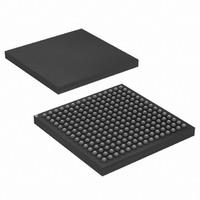AT91CAP7E-NA-ZJ Atmel, AT91CAP7E-NA-ZJ Datasheet - Page 218

AT91CAP7E-NA-ZJ
Manufacturer Part Number
AT91CAP7E-NA-ZJ
Description
MCU CAP7 FPGA 225LFBGA
Manufacturer
Atmel
Series
CAP™r
Specifications of AT91CAP7E-NA-ZJ
Core Processor
ARM7
Core Size
16/32-Bit
Speed
80MHz
Connectivity
EBI/EMI, FPGA, IrDA, SPI, UART/USART, USB
Peripherals
DMA, POR, PWM, WDT
Number Of I /o
32
Program Memory Size
256KB (256K x 8)
Program Memory Type
ROM
Ram Size
160K x 8
Voltage - Supply (vcc/vdd)
1.08 V ~ 1.32 V
Data Converters
A/D 8x10b
Oscillator Type
Internal
Operating Temperature
-40°C ~ 85°C
Package / Case
225-LFBGA
Processor Series
AT91Mx
Core
ARM7TDMI
Data Bus Width
32 bit
3rd Party Development Tools
JTRACE-ARM-2M, MDK-ARM, RL-ARM, ULINK2
Lead Free Status / RoHS Status
Lead free / RoHS Compliant
Eeprom Size
-
Lead Free Status / Rohs Status
Details
Available stocks
Company
Part Number
Manufacturer
Quantity
Price
- Current page: 218 of 520
- Download datasheet (11Mb)
218
AT91CAP7E
Note:
6. Selection of Programmable clocks
7. Enabling Peripheral Clocks
Programmable clocks are controlled via registers; PMC_SCER, PMC_SCDR and
PMC_SCSR.
Programmable clocks can be enabled and/or disabled via the PMC_SCER and PMC_SCDR
registers. Depending on the system used,
abled. The PMC_SCSR provides a clear indication as to which Programmable clock is
enabled. By default all Programmable clocks are disabled.
PMC_PCKx registers are used to configure Programmable clocks.
The CSS field is used to select the Programmable clock divider source. Four clock options
are available: main clock, slow clock, PLLACK, PLLBCK. By default, the clock source
selected is slow clock.
The PRES field is used to control the Programmable clock prescaler. It is possible to choose
between different values (1, 2, 4, 8, 16, 32, 64). Programmable clock output is prescaler
input divided by PRES parameter. By default, the PRES parameter is set to 1 which means
that master clock is equal to slow clock.
Once the PMC_PCKx register has been programmed, The corresponding Programmable
clock must be enabled and the user is constrained to wait for the PCKRDYx bit to be set in
the PMC_SR register. This can be done either by polling the status register or by waiting the
interrupt line to be raised if the associated interrupt to PCKRDYx has been enabled in the
PMC_IER register. All parameters in PMC_PCKx can be programmed in a single write
operation.
If the CSS and PRES parameters are to be modified, the corresponding Programmable
clock must be disabled first. The parameters can then be modified. Once this has been
done, the user must re-enable the Programmable clock and wait for the PCKRDYx bit to be
set.
Code Example:
write_register(PMC_PCK0,0x00000015)
Programmable clock 0 is main clock divided by 32.
Once all of the previous steps have been completed, the peripheral clocks can be enabled
and/or disabled via registers PMC_PCER and PMC_PCDR.
Depending on the system used,
PMC_PCSR provides a clear view as to which peripheral clock is enabled.
Code Examples:
write_register(PMC_PCER,0x00000110)
Each enabled peripheral clock corresponds to Master Clock.
24
peripheral clocks can be enabled or disabled. The
4
Programmable clocks can be enabled or dis-
8549A–CAP–10/08
Related parts for AT91CAP7E-NA-ZJ
Image
Part Number
Description
Manufacturer
Datasheet
Request
R

Part Number:
Description:
Customizable Microcontroller
Manufacturer:
ATMEL Corporation
Datasheet:

Part Number:
Description:
DEV KIT FOR AVR/AVR32
Manufacturer:
Atmel
Datasheet:

Part Number:
Description:
INTERVAL AND WIPE/WASH WIPER CONTROL IC WITH DELAY
Manufacturer:
ATMEL Corporation
Datasheet:

Part Number:
Description:
Low-Voltage Voice-Switched IC for Hands-Free Operation
Manufacturer:
ATMEL Corporation
Datasheet:

Part Number:
Description:
MONOLITHIC INTEGRATED FEATUREPHONE CIRCUIT
Manufacturer:
ATMEL Corporation
Datasheet:

Part Number:
Description:
AM-FM Receiver IC U4255BM-M
Manufacturer:
ATMEL Corporation
Datasheet:

Part Number:
Description:
Monolithic Integrated Feature Phone Circuit
Manufacturer:
ATMEL Corporation
Datasheet:

Part Number:
Description:
Multistandard Video-IF and Quasi Parallel Sound Processing
Manufacturer:
ATMEL Corporation
Datasheet:

Part Number:
Description:
High-performance EE PLD
Manufacturer:
ATMEL Corporation
Datasheet:

Part Number:
Description:
8-bit Flash Microcontroller
Manufacturer:
ATMEL Corporation
Datasheet:

Part Number:
Description:
2-Wire Serial EEPROM
Manufacturer:
ATMEL Corporation
Datasheet:











